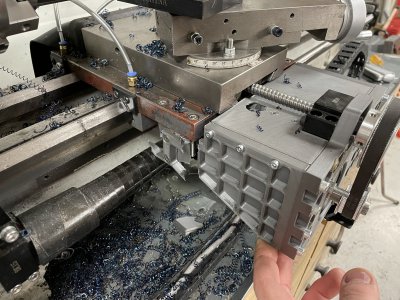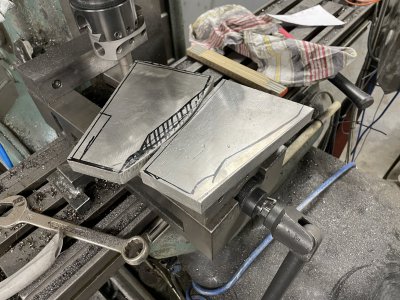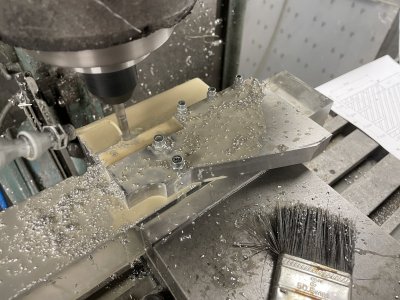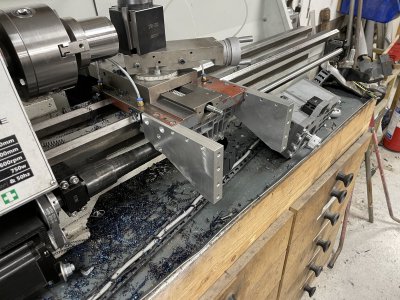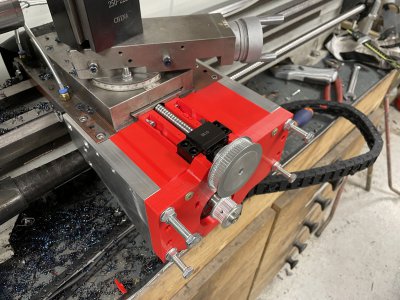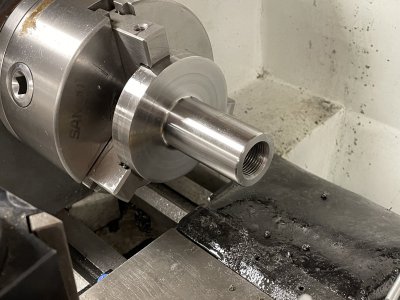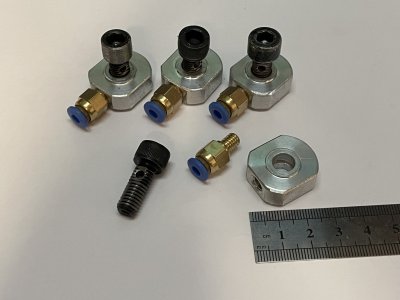- Joined
- Nov 7, 2019
- Messages
- 434
Things are really on the move now! 
Finally got everything calibrated and working.
After testing things on the bench I assembled everything.
Finally added the extendable screw cover, need to make up two brackets so it doesn't just lay on the screw.
I should also change the location of the cable chain, I might be able to make it go underneath the bed, around the backside.
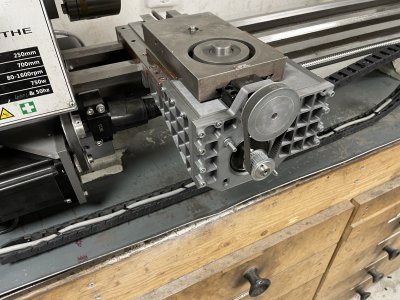
I have to say the GUI is pretty nice, makes it very clear what dimensions you're going for.
Much better than what I'm used to from Mach3.
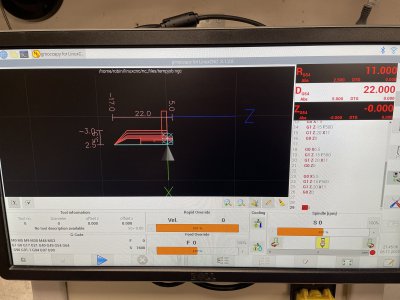
Handcoded that program quickly just to test things out. Most hardware is still printed plastic so I'm not expecting greatness.
To my surprise it works really good! Of course this is just plastic I'm working on but still.
Ran the lathe at 1600 RPM(default max rpm) and I think 500 mm/min so ~0.31mm per rev.
MUCH faster feed than I ever ran manually when trying to stop at a set point.
Now I just need to replace the printed pieces with steel or alu and I'll be set!

Finally got everything calibrated and working.
After testing things on the bench I assembled everything.
Finally added the extendable screw cover, need to make up two brackets so it doesn't just lay on the screw.
I should also change the location of the cable chain, I might be able to make it go underneath the bed, around the backside.

I have to say the GUI is pretty nice, makes it very clear what dimensions you're going for.
Much better than what I'm used to from Mach3.

Handcoded that program quickly just to test things out. Most hardware is still printed plastic so I'm not expecting greatness.
To my surprise it works really good! Of course this is just plastic I'm working on but still.
Ran the lathe at 1600 RPM(default max rpm) and I think 500 mm/min so ~0.31mm per rev.
MUCH faster feed than I ever ran manually when trying to stop at a set point.
Now I just need to replace the printed pieces with steel or alu and I'll be set!
Last edited:


